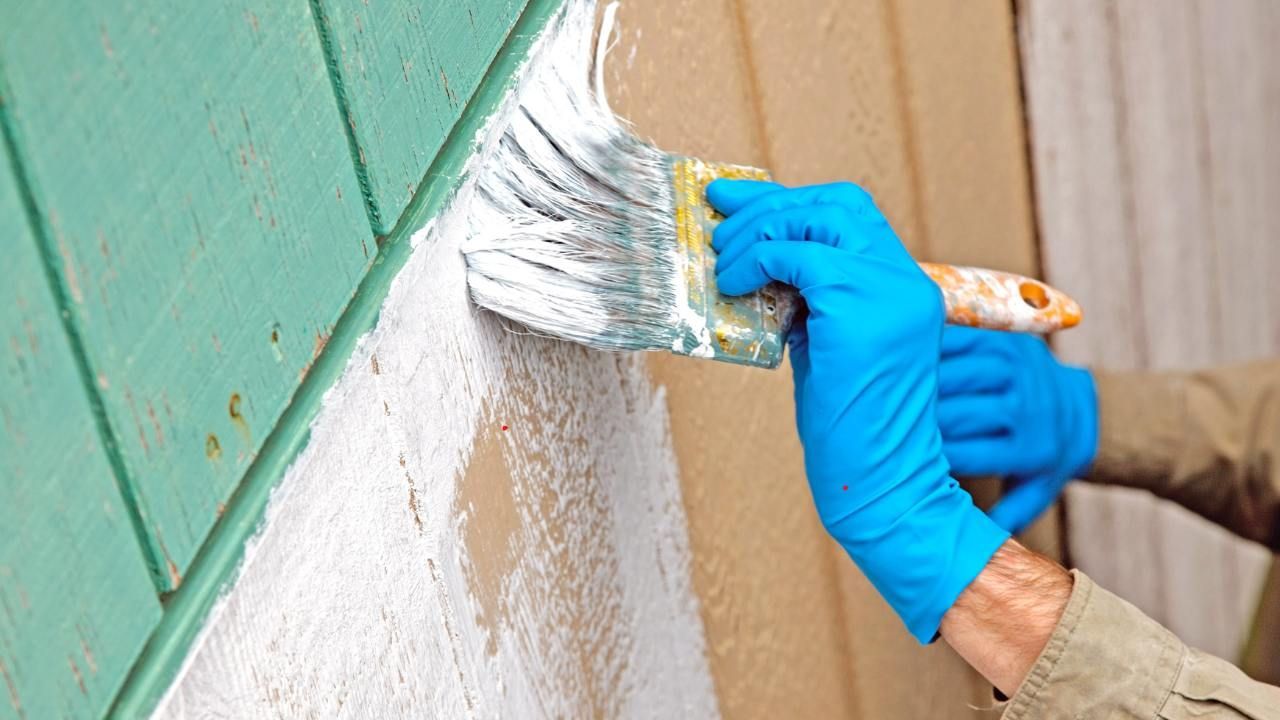How to Paint High Ceilings and Hard-to-Reach Areas Safely

Painting high ceilings and hard-to-reach areas can be a challenging task, but with the right tools, techniques, and safety measures, you can achieve professional results. Whether you're a DIY enthusiast or a painter in Eugene, OR tackling a painting project, here's a comprehensive guide to help you paint those difficult surfaces safely and effectively.
Materials You'll Need
Before you begin, gather these essential materials:
- Extension Ladder: Ensure it's sturdy and tall enough to reach the ceiling comfortably.
- Platform or Scaffold: Provides a stable surface for painting large areas.
- Paint Roller with Extension Pole: For applying paint to ceilings without overstretching.
- Paint Tray and Liners: To hold paint and keep your workspace tidy.
- Painter's Tape: Protects edges and trim from accidental paint splatters.
- Drop Cloths or Plastic Sheets: Covers floors and furniture to prevent drips.
- Safety Gear: Including goggles, gloves, dust mask, and a helmet for additional protection.
Step-by-Step Instructions
Follow these steps to paint high ceilings and hard-to-reach areas safely:
1. Prepare the Room:
- Clear furniture and cover the floor with drop cloths or plastic sheets.
- Use painter's tape to protect edges and trim from paint splatters.
- Ensure the room is well-ventilated by opening windows or using fans.
2. Inspect and Prepare Surfaces:
- Check ceilings for cracks, holes, or stains; patch and sand as needed.
- Clean surfaces thoroughly to remove dust and debris using a vacuum or damp cloth.
3. Set Up Your Equipment:
- Position the ladder or scaffold on a stable, level surface.
- Attach the paint roller to the extension pole securely.
4. Apply Primer (if needed):
- Use a primer to improve paint adhesion and cover dark colors.
- Apply evenly with a roller or brush, starting from the edges and working towards the center.
5. Painting the Ceiling:
- Pour paint into the tray and load the roller evenly.
- Begin painting from one corner of the ceiling, working in small sections.
- Use smooth, overlapping strokes to ensure even coverage.
6. Manage the Extension Pole:
- Extend the pole gradually to reach further areas, maintaining balance and control.
- Avoid overreaching; reposition the ladder or scaffold as necessary.
7. Touch-Ups and Finishing:
- Allow the paint to dry completely between coats as per the manufacturer's instructions.
- Inspect for any missed spots or uneven areas; touch up with a brush if needed.
8. Clean Up:
- Remove painter's tape before the paint dries completely to avoid peeling.
- Clean tools with water or appropriate solvent according to the paint type used.
Safety Tips for Painters
- Weather Awareness: If painting outdoors, consider weather conditions that may affect drying times and application.
- Equipment Maintenance: Regularly inspect ladders, scaffolds, and safety gear for wear and tear.
- Professional Advice: For complex projects or if unsure, consult with painters Eugene OR experienced in high-ceiling and hard-to-reach area painting.
Now that you have a detailed guide on how to paint high ceilings and difficult-to-reach areas safely, it's time to put your knowledge into practice. Remember to prioritize safety, use quality materials, and don't hesitate to seek professional advice when needed.
By following these steps and tips, you can achieve a professional finish while ensuring your safety and the protection of your surroundings. Whether you're enhancing your home's interior or tackling a client's project, mastering these techniques will make painting high ceilings and hard-to-reach areas a more manageable task.
If you're in Eugene, OR and need assistance with your painting project, talk to us. Our team of skilled professionals is ready to help you achieve stunning results. Contact us today for a consultation and let's make your vision a reality!












